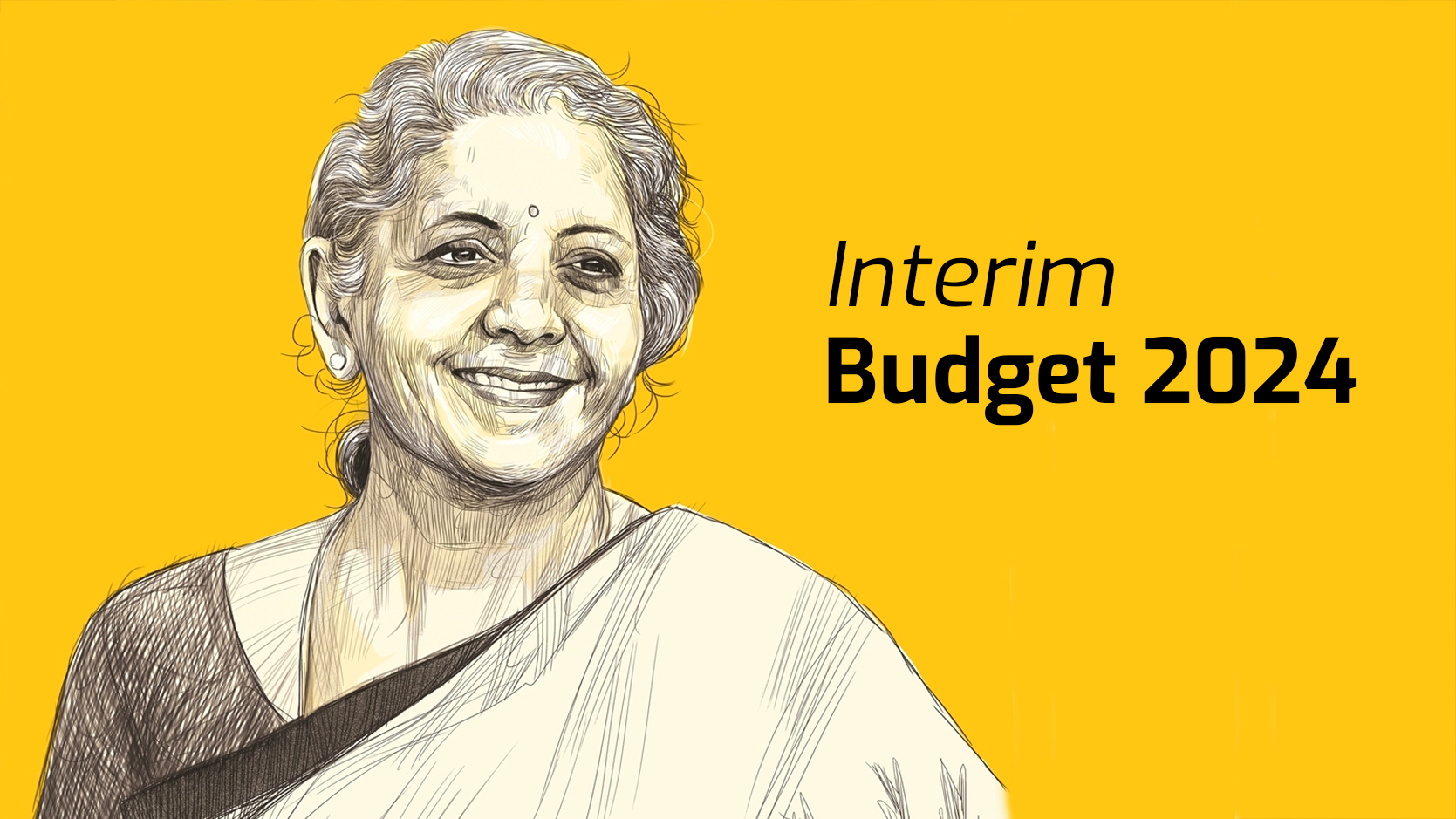India, Algeria Sign MoU on Bilateral Defence Cooperation
Why in News?
CDS General Anil Chauhan visited Algeria as part of a broader endeavour to strengthen India-Algeria relations, which have seen increasing cooperation in recent years.
Overview
India and Algeria have taken significant strides in strengthening bilateral relations, especially in defence. The MoU is set to elevate defence cooperation, fostering mutual strategic interests, and expanding collaboration across various sectors.
Significance of the MoU
The MoU signals a deeper partnership with Algeria, emphasising India’s growing influence in North Africa and the broader strategic landscape. Key highlights include:
- Strengthening Diplomatic Ties: Reflects India’s commitment to North African partnerships, following the Indian President’s visit to Algeria.
- Defence and Security Cooperation: The MoU aims to enable information sharing, joint training, and possible collaborations on defence production under India’s “Make in India” initiative.
- Shared Historical Values: Both nations share common principles of peaceful resolution and opposition to colonialism, providing a foundation for cooperation.
- Strategic Outreach: Reinforces India’s role as a “Vishwa Bandhu” (Global Friend), extending support and cooperation in a complex geopolitical environment.
Components of the Agreement
| Component | Details |
|---|---|
| Joint Military Training | Exchange programs, joint drills, and expertise sharing. |
| Defence Production | Opportunities for Algerian forces to engage in ‘Make in India’ defence production. |
| Intelligence Exchange | Enhanced sharing to address common security threats. |
| Educational Exchange | Collaboration with Algeria’s Higher War College. |
| Diplomatic Channels | Establishment of defence wings in both countries. |
Outcomes of General Chauhan’s Visit
- Participation in Algeria’s 70th Revolutionary Anniversary Events: Demonstrated solidarity and respect for Algeria’s struggle for independence.
- Defense Wing Establishment: India has reinstated its defense wing in Algeria, inviting Algeria to reciprocate.
- Commitment to Peaceful Resolutions: India reiterated its stance on non-interference, promoting peace and stability in conflict zones.
Conclusion
The India-Algeria MoU on defence cooperation marks a significant step in strengthening bilateral ties, enhancing strategic partnerships, and promoting mutual interests in regional stability.
Does Data Justify Subdivision of Quotas?
Why in News?
Recent debates examine the need for a ‘quota-within-quota’ system in affirmative action, analysing data from six states to assess benefits among Scheduled Caste subgroups.
Overview
India’s reservation system has aimed to uplift marginalised communities like Scheduled Castes (SCs) and Scheduled Tribes (STs) through affirmative action. However, disparities within the SC community have raised questions about whether a ‘quota-within-quota’ system could ensure fairer distribution of benefits among SC subgroups. This article explores whether data justifies such a subdivision.
Reservation System
Initially designed to promote social equality, reservations provide SCs/STs access to education, government jobs, and political representation.
Debate on Equity
Over the years, disparities in reservation benefits have been observed within the SC community. Some subgroups seem to benefit disproportionately, prompting discussions about creating sub-quotas within the SC category.
Supreme Court’s Stance
The court recently suggested that a ‘quota-within-quota’ system could be a solution, particularly in cases where intra-SC inequality is stark.
Key Insights from State Data
| State | Main SC Subgroups | Observation |
|---|---|---|
| Andhra Pradesh | Malas, Madigas | Minor differences; both groups benefit comparably from reservations. |
| Tamil Nadu | Adi Dravida, Pallan | Both groups fare similarly in education and employment by 2019. |
| Punjab | Mazhabi Sikhs, Balmikis, Ad Dharmis | Subdivided quotas since 1975 improved access for historically disadvantaged groups. |
| Bihar | Mahadalits (2007) | Over-expansion of Mahadalit category diluted targeted benefits due to political motivations. |
| Uttar Pradesh, Bihar | Multiple SC subgroups | Less than 50% of SC households hold caste certificates, hindering access to reservation benefits. |
Issues in Reservation Accessibility
- Access to reservations depends significantly on the availability of caste certificates.
- States like Tamil Nadu and Andhra Pradesh perform better in issuing these certificates, whereas states like Bihar and Uttar Pradesh lag, restricting many SC households from fully availing benefits.
Analysis: Is ‘Quota-within-Quota’ the Solution?
- Case for Subdivision: In states like Punjab, quota subdivision has helped disadvantaged SC groups to access resources equitably.
- Counterpoint: In states where SC groups are more homogeneously benefiting (e.g., Andhra Pradesh, Tamil Nadu), subdivision may not be necessary.
The Debate on “Creamy Layer” Exclusion
The Supreme Court also proposed a “creamy layer” exclusion within SC reservations to target benefits toward the economically disadvantaged. However, socio-economic advancement does not necessarily eliminate caste-based discrimination, making the policy complex to implement.
Current Issues with “Creamy Layer”
- Limited evidence that economic advancement reduces discrimination in job or housing opportunities for historically oppressed groups.
- Persistent overt and covert forms of untouchability continue to affect marginalised communities.
- Dalit middle class emergence may gradually support such policies but requires more time and data.
Policy Recommendations
- Focus on Data: A national census is critical for understanding caste-based disparities.
- Improve Access: Ensuring all SC groups can access caste certificates is essential before considering further quota subdivisions.
- Gradual Introduction of “Creamy Layer”: Implement this policy cautiously as the SC middle class grows and caste-based discrimination lessens.
Conclusion
The reservation system needs reforms focusing on equitable access and updated data, ensuring all marginalised groups benefit, while addressing disparities between SCs and upper castes.
Unexpected Link Between Nickel Toxicity, Cholesterol Levels Found
Why in News?
In a new study, fungi that lacked the Sre1 protein were found to be highly sensitive to nickel; the gene that encodes for this protein is conserved in all animals, including humans.
Introduction
A recent study from the University of Georgia has unveiled a surprising connection between nickel toxicity and cholesterol levels, highlighting the role of specific proteins and genes in these biological processes. This discovery opens new avenues for understanding fungal biology and its implications for human health.
Key Findings of the Study
The research, published in PLoS Genetics, indicates that:
- Nickel Sensitivity: Fungi lacking the Sre1 protein showed heightened sensitivity to nickel exposure.
- Sterol Biosynthesis: Nickel exposure was linked to sterol deficiency in both mammalian and fungal cells, challenging previous assumptions about nickel toxicity’s isolated impact.
- Gene Expression: The over-expression of the ERG25 gene in fungal cells enhanced tolerance to nickel, suggesting a critical role in sterol biosynthesis and metal tolerance.
Parameter Details
| Primary Study Focus | Nickel toxicity and its link to sterol biosynthesis. |
|---|---|
| Key Organisms Studied | Cryptococcus neoformans (fungus) and mammalian cells. |
| Critical Proteins | Sre1 (sterol response element 1), SREBP (sterol regulatory element binding protein), and ERG25. |
| Sterols | Cholesterol (in mammals) and ergosterol (in fungi). |
| Research Implications | Potential for novel antifungal treatments by targeting nickel tolerance mechanisms. |
Nickel and Sterol Function in Nature
Nickel plays a dual role in nature:
- Essential Nutrient: Required for the function of the enzyme urease in plants, bacteria, and fungi.
- Toxicant: At elevated levels, nickel compounds are known to be carcinogenic and act as contact allergens in humans.
Biological Role of Sterols
Sterols are vital for cellular functions:
- In Mammals: Cholesterol, the primary sterol, is crucial for cell membrane integrity. However, excessive cholesterol can lead to cardiovascular diseases, including heart attacks and strokes.
- In Fungi: Ergosterol serves a similar structural role. Antifungal medications often target ergosterol biosynthesis, sparing human cells while inhibiting fungal growth.
Mechanism of Action
The researchers demonstrated the mechanism linking nickel and sterol levels:
- Sre1 and SREBP: The Sre1 protein regulates genes for sterol biosynthesis. Its mammalian counterpart, SREBP, is activated when cholesterol levels are low, leading to increased sterol production.
- Nickel Influence: Nickel exposure was shown to trigger the cleavage of SREBP, impacting cholesterol levels in human cells.
- Role of ERG25: Over-expression of the ERG25 gene restored nickel tolerance in the Sre1 mutant strain, suggesting its pivotal role in managing both sterol biosynthesis and nickel exposure.
Effects of Nickel on Sterol Levels
| Cell Type | Sterol Affected | Observations |
|---|---|---|
| Fungal Cells (C. neoformans) | Ergosterol | Reduced ergosterol levels |
| Human Cells | Cholesterol | Decreased cholesterol levels |
Future Directions
The study prompts several key research questions:
- Can ERG25 gene homologs in other fungi provide nickel tolerance?
- Is the sterol biosynthetic function of ERG25 essential for nickel tolerance?
- Does the human homolog of ERG25 influence nickel tolerance in human cells?
Potential for Novel Treatments
The dual role of the ERG25 protein in sterol biosynthesis and nickel tolerance suggests new therapeutic strategies, particularly in antifungal drug development.
Conclusion
The discovery of the link between nickel toxicity and cholesterol levels via Sre1 and ERG25 not only enhances our understanding of fungal biology but also raises important implications for human health, especially concerning cholesterol management and antifungal treatments.
WHO Reports Shows India Has Plugged Gaps in TB Care. Funding Deficits Could Delay Eradication
Why in News?
The report recognises India’s effort to curb tuberculosis but the pace needs to increase to achieve the original goal of elimination by 2025.
Overview
The World Health Organization (WHO) has released a report highlighting India’s advancements in tuberculosis (TB) care while also warning of funding deficits that may hinder the country’s goal of eradicating TB by 2025. This report emphasises the need for increased efforts to address ongoing challenges in TB treatment and care.
Progress in TB Care
- The WHO report recognizes the significant strides India has made in bridging the gap between detected and undiagnosed TB cases.
- Notably, over 85% of those suspected to have TB were receiving treatment, reflecting the effectiveness of recent government interventions, such as shortened treatment regimens.
Challenges Ahead
Despite this progress, achieving the target of TB elimination by 2025 remains daunting. Persistent challenges include:
- Lack of Awareness: Many individuals remain unaware of TB symptoms and treatment options.
- Inadequate Medical Facilities: Limited access to healthcare services hampers effective diagnosis and treatment.
- Undernutrition: A Lancet report attributes 35-45% of new TB cases to poor diet, with undernutrition significantly increasing mortality risk among TB patients.
Government Support and Recommendations
- While the government has implemented nutritional support schemes, coverage remains insufficient.
- An estimated 20% of TB patients do not receive adequate assistance, which is crucial for improving health outcomes.
- The WHO has called attention to the significant decrease in funding for TB eradication in India, emphasising the need for corrective measures.
- The government has the potential to leverage its health insurance program to extend coverage to TB patients, especially those with multi-drug-resistant TB.
Conclusion
To achieve the ambitious goal of TB elimination by 2025, India must enhance its TB control strategies through increased funding, improved healthcare infrastructure, and comprehensive support systems for affected individuals.
Maintain Balance Between Probes and Ease of Business: CBIC to Customs
Why in News?
The new instructions come after concerns being raised by a section of taxpayers on investigations lingering for years.
Context
In November 2024, the Central Board of Indirect Taxes and Customs (CBIC) issued new guidelines to streamline the investigation process concerning tax evasion related to imports and exports, aiming to enhance the ease of doing business.
Approval Requirement
- Investigations must not proceed without the Commissioner’s approval.
- Each case of commercial intelligence (CI) must be concluded within one year.
Nature of Cases
- Differentiation between CI cases and outright smuggling of contraband.
- CI cases involve tax evasion and require careful analysis before initiating investigations.
Documentation and Communication
- Officers must request information and documents in writing, clearly outlining the inquiry’s nature.
- Reasonable timeframes should be set for compliance with requests for information.
Analytical Approach
CBIC emphasised thorough analysis of intelligence inputs, including:
- Cross-referencing with available data.
- Reviewing technical literature and industry practices.
- Considering judicial pronouncements and existing legal frameworks.
Closure of Investigations
- Investigations should not be kept pending unnecessarily.
- Closure reports must summarise findings and clarify that no objectionable issues were found, ensuring timely communication of any government dues owed.
Implications
- The guidelines are aimed at reducing taxpayer concerns regarding prolonged investigations while ensuring effective enforcement against tax evasion.
- This initiative also seeks to improve the overall business environment by fostering transparency and efficiency.
Conclusion
The CBIC’s new guidelines aim to balance regulatory enforcement with ease of business, enhancing transparency and efficiency in tax investigations to foster investor confidence.
US Elections and the Chinese Stimulus: Two Triggers That Outweighed Domestic Factors in Monday’s FPI Selloff
Why in News?
Indian markets are closely watching the US presidential elections, with recent volatility indicating uncertainty about the election outcome and its global implications.
Overview
The Indian stock market, along with global counterparts, recently witnessed a significant selloff influenced primarily by external factors, notably the impending US presidential elections and China’s economic stimulus measures. This article analyses the domestic and international factors contributing to this trend, focusing on foreign portfolio investment (FPI) behaviour and market sentiment.
Domestic Factors
- Market Sentiment: Recent corporate earnings reports indicate sluggish performance, leading to a reassessment of stock valuations.
- Domestic Investor Activity: Unlike previous trends, domestic mutual funds are not absorbing the shares being sold by foreign investors. Historically, FPI selloffs were seen as buying opportunities.
- RBI Interest Rates: The Reserve Bank of India (RBI) has hinted at persistent inflationary pressures, making a December interest rate cut unlikely. This shift in expectation is causing uncertainty regarding government spending, which has been subpar in the initial half of the financial year.
International Factors
- US Elections: The proximity of the US presidential elections is generating volatility in Indian markets. Analysts are closely monitoring the potential for a second Trump administration, which could have far-reaching effects on market sentiment.
- Federal Reserve Meeting: The upcoming meeting of the US Federal Reserve (November 6-7) is crucial, as it may hold interest rates steady after previous cuts, thereby influencing global capital flows.
- Chinese Economic Stimulus:
- On November 1, 2024, China’s central bank announced a significant $70 billion stimulus package aimed at improving liquidity and encouraging bank lending amid sluggish economic growth.
- The Chinese government is preparing to introduce measures that may include assistance for households, recapitalization of banks, and refinancing of provincial government debts. Analysts estimate that this stimulus could be 2-3% of China’s GDP annually.
Implications for India
- The anticipated economic measures from China could make the Indian market less attractive to foreign investors, especially if US election outcomes lead to increased tariffs on Chinese goods.
- This may result in reduced FPI inflows to India, exacerbating existing market challenges related to corporate earnings and valuation concerns.
Conclusion
- The interplay of domestic and international factors is crucial in understanding the recent selloff in Indian markets.
- The outcome of the US elections and the Chinese stimulus measures are pivotal events that will likely shape investor sentiment and market dynamics in the near future.
Time for Action: On the Climate Conference Huddle in Baku
Why in News?
Concrete action must take centre stage in climate mitigation.
Context
The annual global climate conference will convene in Baku, Azerbaijan, aiming to drive substantive action against human-caused global warming. Scientific analyses indicate that limiting global warming to 1.5°C above pre-industrial levels requires a peak in greenhouse gas (GHG) emissions by 2025 and a reduction of 43% by 2030. However, current national commitments are insufficient, projecting only a 2.6% reduction by 2030.
Key Highlights
| Topic | Details |
|---|---|
| Emission Reduction Target | Scientific assessments emphasise a 43% reduction in global GHG emissions by 2030 to limit warming within 1.5°C of pre-industrial levels. |
| Current Reduction Pledges | Summed up national commitments fall short, leading to only a 2.6% emission reduction by 2030 from 2019 levels. |
| Emission Trends | Global emissions have generally risen annually, with 53 billion metric tonnes emitted in 2023. |
| Climate Finance | Developed countries committed to mobilising $100 billion annually for developing countries by 2020, yet this goal remains largely unmet. |
| NCQG (New Collective Quantified Goal) | The Paris Agreement requires a new climate finance target before 2025, with the $100 billion as the base value. |
| Carbon Markets | Carbon trading involves developed countries funding carbon offsets in developing countries, but regulatory clarity is lacking. |
Challenges in Achieving Climate Goals
- Funding Deficits: Developing nations argue that the pledged $100 billion for climate finance is unfulfilled. Ambiguity around defining ‘climate finance’ hinders financial transparency and effectiveness.
- Economic Divergences: Wealthier nations resist lifestyle compromises, while developing nations seek economic growth. Transitioning to renewable energy sources presents high costs and infrastructure demands for developing economies.
- Regulatory Complexity in Carbon Markets: Establishing fair and effective carbon credit mechanisms remains challenging due to the technical and legal intricacies involved.
Critical Issues at Baku Conference
- Defining the New Climate Finance Target (NCQG): A central agenda item will be establishing a consensus on NCQG for climate finance, accounting for inflation and the evolving climate needs of developing countries.
- Improving Carbon Markets: Agreeing on transparent rules for carbon markets to ensure that credit and offsetting measures are effective, accountable, and equitable.
Required Actions
Concrete, enforceable actions and binding commitments are critical for significant progress in global climate mitigation efforts. Negotiations must prioritise actual emission reductions and mobilise adequate resources for developing nations to transition to sustainable growth pathways.
Ahead of COP29, Rich Countries Expect Private Money to Fill Green Funding Gap
Why in News?
At the COP16 negotiations in Colombia, countries failed to figure out how they would mobilize $200 billion a year in conservation funding by 2030.
Context
At the COP16 biodiversity summit in Cali, Colombia, nations faced the challenge of mobilizing $200 billion annually for global conservation by 2030. Although wealthy countries had committed to provide $30 billion annually as part of the Kunming-Montreal Global Biodiversity Framework, consensus on funding mechanisms remains elusive. As the upcoming COP29 climate summit in Azerbaijan approaches, a growing emphasis is being placed on private capital to bridge the funding gap.
Funding Challenges and Conservation Needs
- Funding Target: Nations had agreed to mobilize $200 billion by 2030, including $30 billion from developed nations.
- Failed Consensus: At COP16, countries could not agree on how to achieve this target, resulting in the suspension of the summit without an agreement.
- Biodiversity at Risk: Over 1 million plant and animal species are threatened by extinction due to human activities like mining, urbanization, and agriculture. Climate change, with rising temperatures and disrupted weather patterns, further exacerbates these risks.
Dwindling Public Contributions
- Reduction in Aid: Countries like Germany, Netherlands, France, and the U.K. have cut foreign aid, including funds earmarked for nature conservation.
- 2022 Contributions: Only $3.8 billion was dedicated to international nature conservation, down from $4.6 billion in 2015.
- U.S. Absence: The U.S., not a party to the U.N. Convention on Biological Diversity, has not contributed to this fund.
Private Sector Engagement
- Genetic Resource Charges: COP16 delegates proposed charging companies, particularly in the pharmaceutical sector, for using genetic information in product research. This measure could generate approximately $1 billion annually.
- Green Bonds and Debt-for-Nature Swaps: Innovative mechanisms, like green bonds and debt-for-nature swaps (refinancing national debt in exchange for conservation investment), are being explored to attract private investment. The World Economic Forum estimates that debt-for-nature swaps alone could generate up to $100 billion.
Conclusion
With public conservation funds stagnating, the upcoming COP29 is expected to focus heavily on mechanisms to attract private investment in biodiversity and climate initiatives. Innovative financing tools like green bonds and debt-for-nature swaps offer promising solutions but face practical challenges in achieving the scale required to meet global conservation goals.
Big Tech’s Fail — Unsafe Online Spaces for Women
Why in News?
The U.S. presidential election and the campaign have again highlighted a key issue — technology and online spaces posing a threat to the safety and dignity of women.
Overview
The proliferation of AI-generated content, such as deepfakes, has transformed online harassment, particularly affecting women in leadership positions. Politicians have been subjected to gendered disinformation campaigns, highlighting both Big Tech’s inadequate moderation and the systemic bias within AI algorithms. This issue demands accountability from tech companies and calls for more women in decision-making roles within the technology sector.
Targeted Disinformation and Harassment
- AI-Generated Harassment: Prominent women leaders have faced AI-generated harassment, including deepfake videos and manipulated images, highlighting a growing trend of gendered online abuse.
Role of Big Tech
- Safe Harbour Protections: Big Tech companies often evade responsibility under ‘safe harbour’ protections, claiming they merely provide platforms, not content.
- Lack of Accountability: Their reluctance to curb harmful content reflects a lack of accountability in protecting users, especially women.
Gender Bias in AI and Technology
- Existing Biases: AI’s societal impact mirrors existing biases, with low female representation in tech roles contributing to discriminatory algorithm design.
- Amplifying Gender Stereotypes: AI-generated harassment of women amplifies gender stereotypes and presents a barrier to digital safety.
Necessary Measures for Safer Online Spaces
- Increased Accountability for Tech Companies: Implementing stricter content moderation and enforcing financial penalties for failing to manage harmful content.
- Enhanced AI Regulations: Developing bias-free AI and ensuring data transparency to prevent discriminatory practices.
- Inclusion of Women in Decision-Making Roles: Increasing female representation in tech can help address gender bias in digital platforms.
Deepfake Technology
Deepfakes are AI-generated media that create realistic fake videos and audio, primarily using Generative Adversarial Networks (GANs).
Applications
- Entertainment: Visual effects, rejuvenation of actors, dubbing.
- Education: Realistic simulations for training.
- Marketing: Personalized content.
Ethical Concerns
- Misinformation: Spreads false narratives and deceives the public.
- Privacy Violations: Targets individuals without consent.
- Manipulation: Used in scams and to influence public opinion.
Security Implications
- Political Risks: Undermines democratic processes with fake news.
- Cybersecurity Threats: Facilitates phishing using deepfake audio.
- Regulatory Challenges: Difficulties in governing and prosecuting misuse.
Responses
- Detection Tools: Development of technologies to identify deepfakes.
- Legal Framework: Exploration of laws to address misuse.
- Public Awareness: Education on recognizing deepfakes.
Conclusion
To ensure women’s safety online, tech companies and policymakers must prioritize accountability, inclusivity, and robust content moderation, fostering equitable digital spaces free from bias.
We Need to Address India’s Workplace Culture
Why in News?
If we are to address the worst excesses of India’s corporate culture, some form of regulation seems unavoidable.
Introduction
India’s corporate culture has recently come under intense scrutiny due to a high-profile case highlighting issues of work-related stress and toxic work environments. The tragic death of Anna Sebastian, a young Chartered Accountant, has sparked a nationwide debate on workplace practices and the need for better safeguards to protect employees’ well-being. This article delves into the causes and consequences of toxic work culture in India, contrasts it with global standards, and explores potential solutions.
Toxic Corporate Culture in India
Causes of Toxic Work Culture
- Profit-Centric Focus: Companies aim to maximize output with minimal workforce, leading to fewer hires and higher workloads.
- Insufficient Regulatory Oversight: Lack of stringent labor laws regarding work hours and workplace behavior creates space for managerial excesses.
- Cultural Norms: Hierarchical work environments in India sometimes enable behavior that would be considered unacceptable in Western corporate spaces.
- Job Insecurity: High competition for limited jobs forces employees to accept challenging conditions to avoid risking their positions.
Potential Solutions for Addressing Corporate Culture
- Policy-Based Solutions: Introducing regulations for fair working hours and workplace behavior standards.
- Enhanced Board Oversight: Making boards accountable for monitoring work culture, setting up grievance redress mechanisms.
- Focus on Work-Life Balance: Corporate policies must actively promote flexible working, mental health programs, and transparent evaluation systems.
- Role of Public Sector: The public sector can set an example by promoting positive workplace culture, fair pay practices, and union representation to curb excesses.
Conclusion
Addressing India’s toxic corporate culture requires urgent reforms, regulatory oversight, and a commitment to employee well-being to foster a healthier, more productive work environment.
Array




